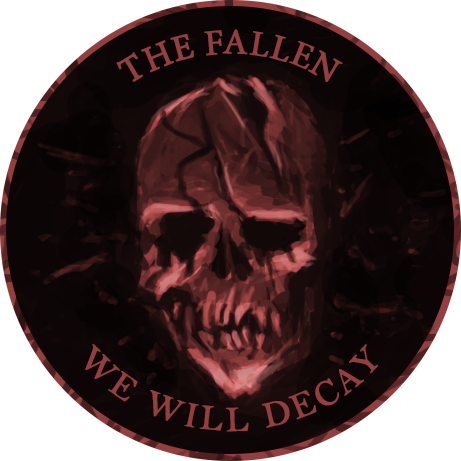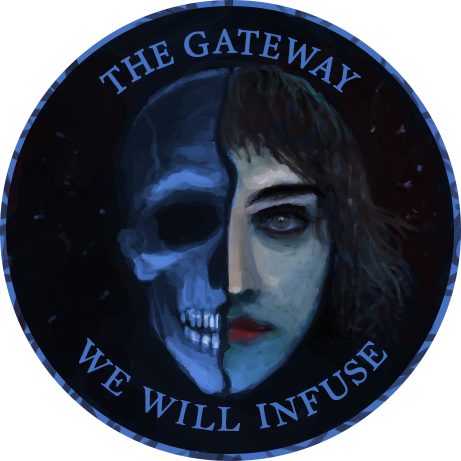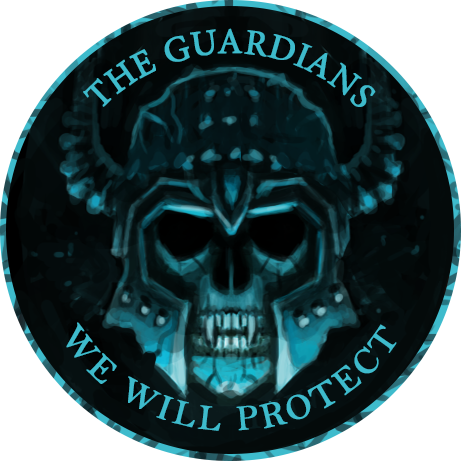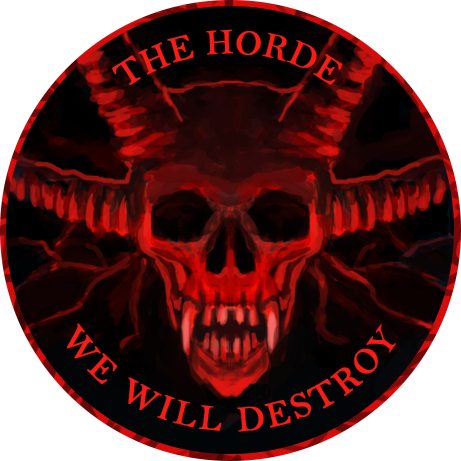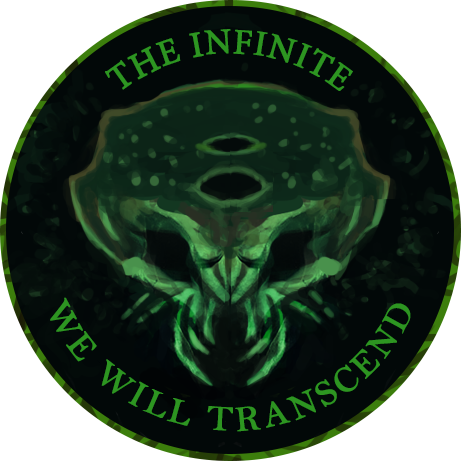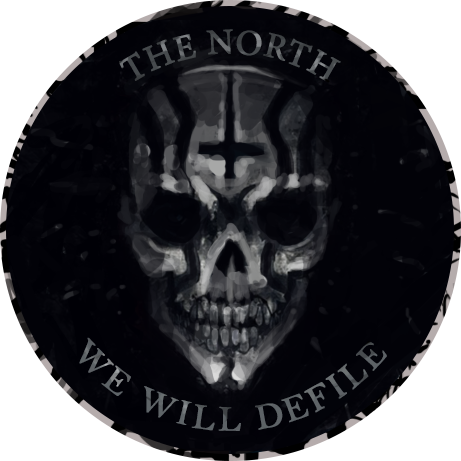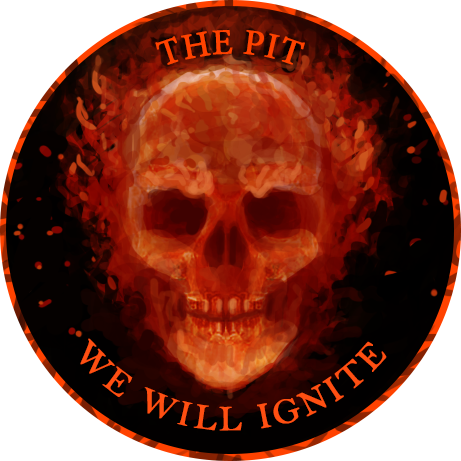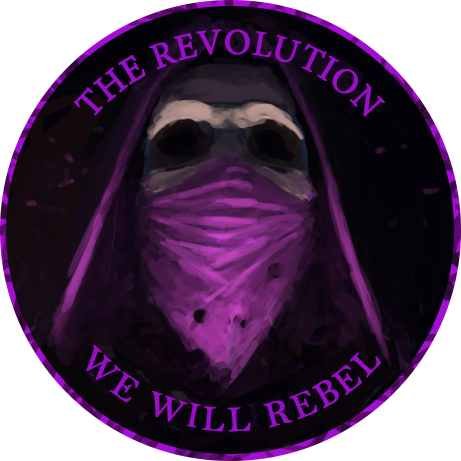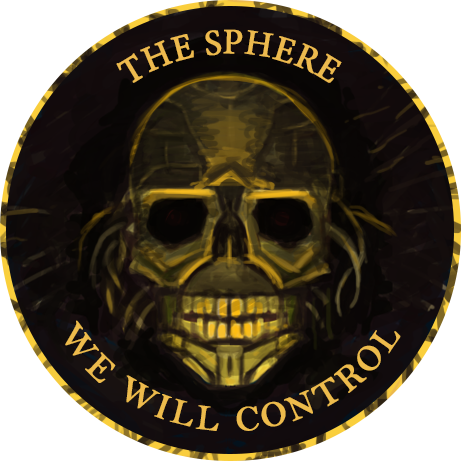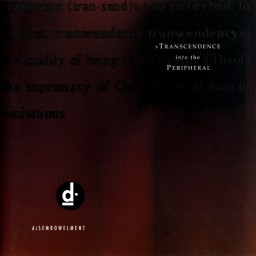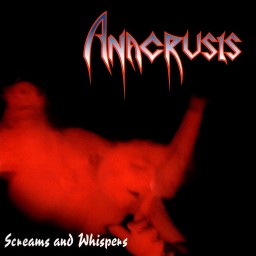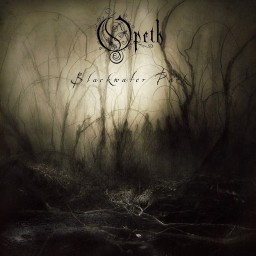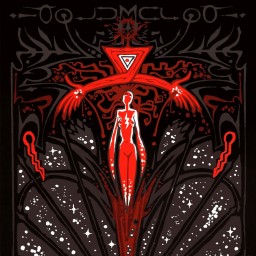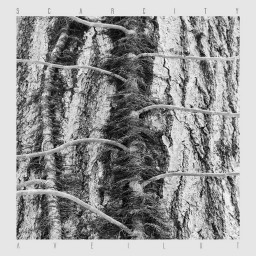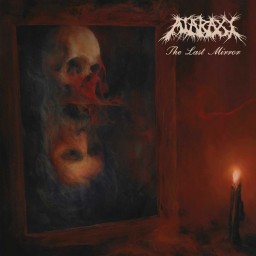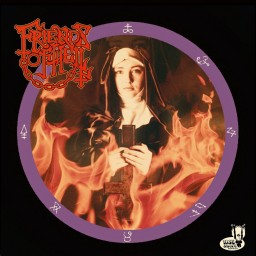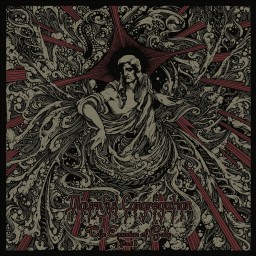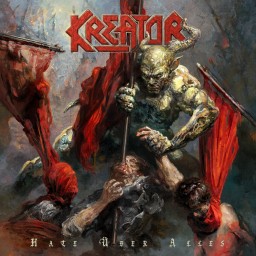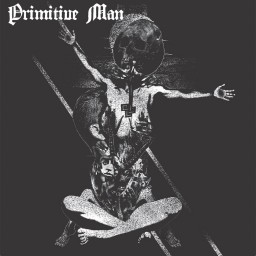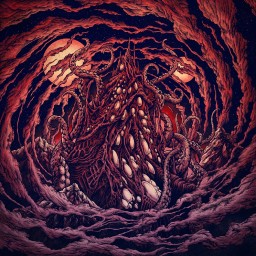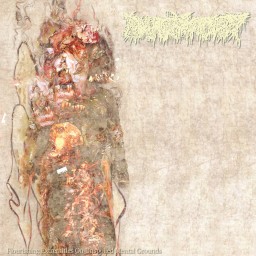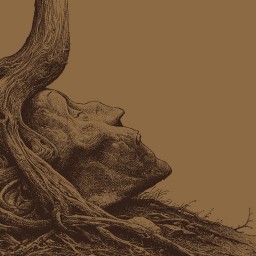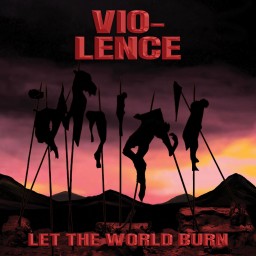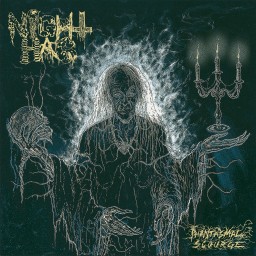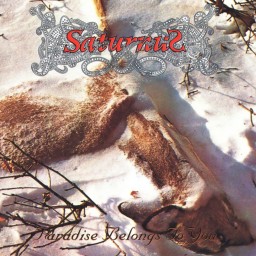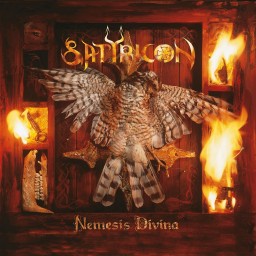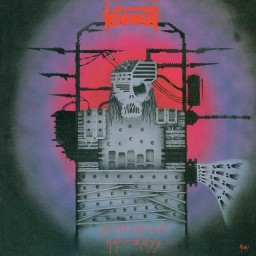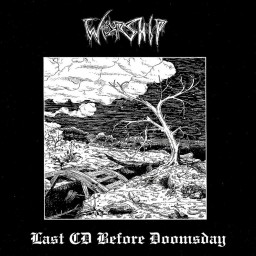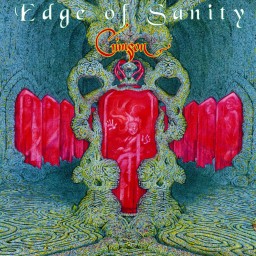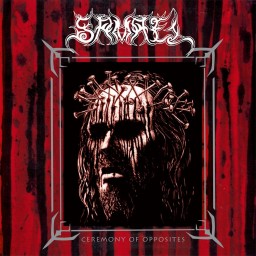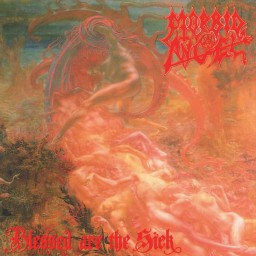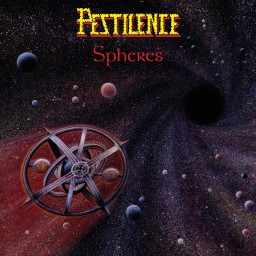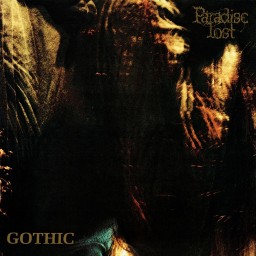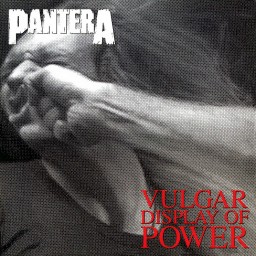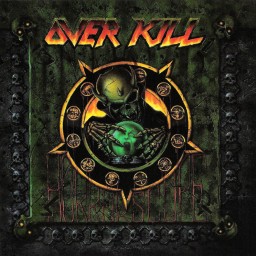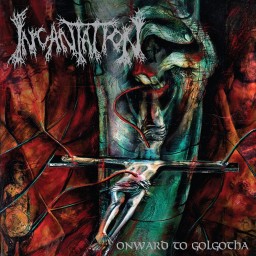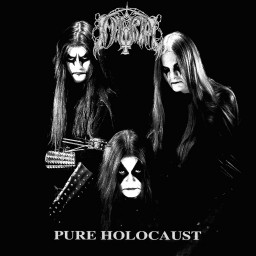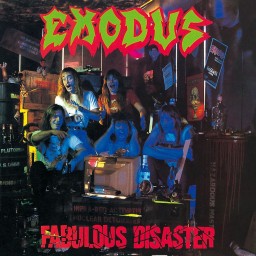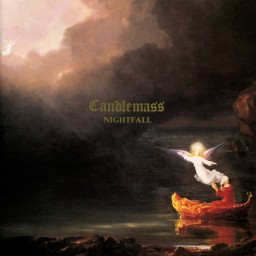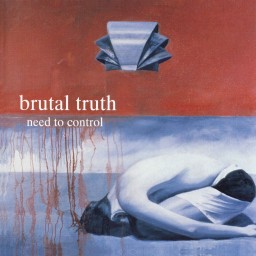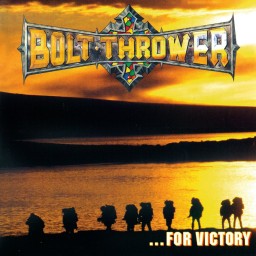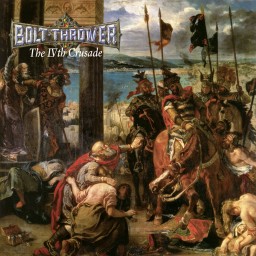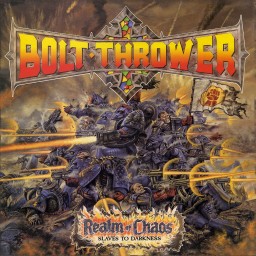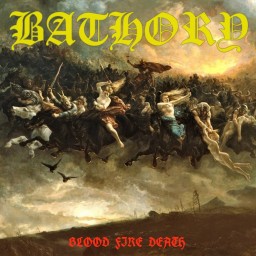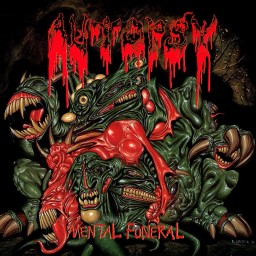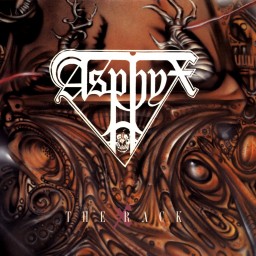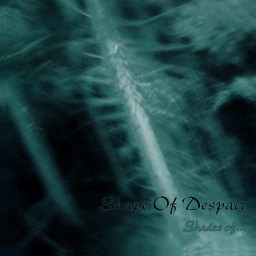Ben's Reviews
An album that moves me immensely, diSEMBOWELMENT is an experience unlike any other!
I've always been proud of my country. Australia is a fine place to live and considering our population size, we hold our own in the sporting arena. We've produced many famous actors that have made it big in Hollywood ranging from Cate Blanchett and Nicole Kidman to Russell Crowe and Hugh Jackman. But one area we are most definitely lacking in is the realm of metal music. The metal scene in Australia is appalling when compared to the US, the UK, and pretty much anywhere in Europe or Scandinavia. Of course, there is the occasional diamond in the rough, such as Destroyer 666, Mournful Congregation, The Amenta and Alchemist (I wonder how many of you reading this, own anything by the above bands?!) Anyway, the point is that there is only one metal band that makes me extremely proud to be Australian and that band is diSEMBOWELMENT. Transcendence Into the Peripheral is diSEMBOWELMENT's one and only full length release, but it's the only one they ever needed to create. No other band has ever managed to replicate what they produced here and since they never even tried themselves, it will always remain a unique and treasured piece of work.
This is death doom metal of the highest order! But I'm not talking about gothic, romantic death doom such as My Dying Bride would produce. I'm talking funeral doom levels of despondency and minimalism combined with full throttle blast beats and perfectly placed double bass kicking. Out of all the bands labelled death doom, there is none more appropriate than this one as both death metal and funeral doom are combined into an exquisitely dark hybrid of cold, sorrowful, desolation. It's hard for me to explain how much this music moves me. It just about brings me to tears at times through pure emotional connection and I simply don't want the album to end. It's the kind of album that I want to show friends and family so that they too may experience the wonders of diSEMBOWELMENT, even though there's not a chance in the world that a single one of them would find anything that they remotely enjoy. After all, the drumming is at times so minimal, you're not sure when the next beat is going to arrive. Then at other times it comes at you in a barrage of aggression and brutality. The vocals are sickeningly low and guttural at times and then tortured and angry at others.
The riffs are low tuned and repetitive with a production that almost leaves them behind while still making your speakers shake. Even the gorgeous (how did they find that guitar sound!?) melodies that counteract all the darkness beneath seem to have an almost alien presence of their own that fills the listener with a sort of unease. There are not all that many people on this planet (and I'm not trying to be elitist here) that can enjoy this type of music. But those that can are in for a journey unlike any other. Every track is amazing so it's difficult to pick out highlights, but I don't think any move me more than Your Prophetic Throne of Ivory, The Spirit of the Tall Trees and Cerulean Transience of All My Imagined Shores. I might sound like some sort of marketing guy for the band (unlikely since they disbanded 15 years ago) or even an overly patriotic individual looking for something to claim, but honestly, this is one of the very best albums in my extensive collection of metal and I damn well want to tell the world about it. If you can cope with the more depressive sounding side of extreme metal, then do yourself a favour. You need to experience this!
Genres: Doom Metal
Format: Album
Year: 1993
Incredible progressive thrash metal that's essential for anyone into bands like Coroner.
After only recently finding the brilliant Manic Impressions (after being recommended in on Rate Your Music!), I simply couldn't wait to delve into the bands most praised release Screams and Whispers. I must admit that at first, I wasn't as blown away as I expected to be. I guess I forgot that even Manic Impressions took 2 or 3 spins to really come to grips with and this album is no different. Anacrusis create progressive thrash metal that doesn't just shred in the way we expect from this style of music, they manage to create completely brilliant, catchy as hell experiences. Screams and Whispers is filled with classics that impress me from a technical point of view, while simply refusing to get out of my head for the rest of the day (and I mean that in a good way) and that's something only the very best bands can manage.
My main attractions to this band would have to be the sensational riffs and melodies, along with the voice of Kenn Nardi. I crapped on about his amazing vocal talent in my review of Manic Impressions, but I must raise it here again. This guy covers all the bases of extreme metal and does so with ease, while also having the added responsibility of playing guitar! But it's the little things that take their work from great to frickin' brilliant. Touches of keyboards and classical instruments add another dimension to each track and make the times when the band just crank up the metal more potent. Highlight tracks are Sound the Alarm, Release and Tools of Separation, but it's all damn good. I simply must give this album 5 out of 5 and recommend it to anyone into bands such as Coroner and later period Sadus.
Genres: Progressive Metal Thrash Metal
Format: Album
Year: 1993
Opeth goes big with another flawlessly executed example of genre defying beauty.
The critical and commercial success of 1999’s Still Life album meant that Opeth had not only a lot to live up to with their next release, but also a big opportunity to take the next step in global popularity. It was therefore unsurprising that the band decided to recreate much of the same working conditions they experienced for the fruitful Still Life sessions. That meant once again entering Studio Fredman on August the 10th, 2000, having had minimal rehearsals and with no lyrics written whatsoever. While this lack of preparation was due to unforeseen circumstances for Still Life, they were so happy with the result that they repeated the process intentionally this time around. Mikael had spent a couple of months at a friend’s house in the countryside forming riffs and basic structures, but much of the work to complete the writing would need to be done over a period of seven tough weeks in the studio. For the first two weeks the band slept in a little room within Studio Fredman that had four beds, but since there was no shower available, the guys started to really stink by about day ten. Mikael is quoted as saying “the smell in there was overpowering to say the least! Then again...for us it’s a natural way of recording....you gotta be filthy and disgusting to be able to release the pain”. They did however rent Mikael Stannes flat (from Dark Tranquillity) for the last five weeks, so I assume any benefit they were getting just couldn’t outweigh the negatives.
While Opeth were in some ways trying to repeat the positive results of yesteryear, there were some clear changes afoot that would affect the outcome. For the first time in their history the band went into the studio with a title chosen. The album would be called Blackwater Park, a name chosen after the German 70’s progressive rock band of the same name. Åkerfeldt has always been obsessed with obscure 70’s progressive rock (Still Life was named after a British rock band from the same era) and while Opeth may not have taken too much influence directly from the band Blackwater Park’s single release, he has suggested that knowing the title beforehand gave them direction in some small way. Another change between releases is that Blackwater Park was set to be released on yet another new label for the band. After only one album on Peaceville Records, Opeth signed an agreement with American label Koch Records (now known as E1 Music). I can’t find much info on why this change occurred, but I can only guess that the move was an attempt to crack into the American market, which is something previous albums had failed to do. After spending time on Candlelight and Peaceville, this would be Opeth’s first venture out onto a non-metal specific label, albeit one that also distributed Cradle of Filth. These differences are of course minor in the scheme of things, but the involvement of Porcupine Tree’s Steven Wilson certainly was not.
A month prior to recording Blackwater Park, Mikael had been having dinner with Wilson and they began to discuss the idea of the Porcupine Tree legend producing the upcoming album. Wilson displayed interest in the idea and after hearing some of Mikael’s demo material, agreed to travel to Sweden for the job. The idea was not for Wilson to oversee the entire seven weeks recording, but to come in midway through to make suggestions and add an alternate perspective. In fact, by the time he arrived at Studio Fredman, Opeth had already recorded the drums, rhythms, bass and acoustic guitars, leaving Wilson to produce only the clean vocals and guitar leads. It’s therefore pretty hard to understand how he made such a significant difference to the Opeth sound, but Mikael has stated that Wilson had “an immense impact on the recording” and that he took the band into “a new phase”. He suggested numerous “fucked up” ideas that Opeth would not normally have considered, including “strange noises for guitars and voice”, and yet they decided to implement pretty much all of them given their respect and trust for Wilson as a producer and musician. One of the most obvious influences can be heard on Drapery Falls with the so-called “telephone voice” often found in Porcupine Tree showing up in Opeth for the first time. On top of this, Wilson contributed some vocals, piano and guitar to the album, making his twelve day input into Blackwater Park invaluable.
When Blackwater Park was released on the 21st of February 2001, it was obvious immediately that Wilson’s involvement had caused a shift in Opeth’s sound, but that adjustment was more to do with production values than song structure. Opeth’s fifth album has a fantastic sheen to it where every part of the experience comes to life in crystal clear clarity, without reducing the metallic force. There was nothing particularly wrong with the production on previous albums, but Blackwater Park just feels ultimately more professional from start to finish, which when combined with slightly less intricate arrangements and storytelling (no drawn out, ever-shifting epics and no mood-controlling concepts), unsurprisingly resulted in Opeth’s most successful release and one that doubled their popularity overnight. All the elements that make Opeth so breathtaking are still present, with acoustic guitar mixed with highly atmospheric riffs, passionate growls switching seamlessly to emotionally moving clean vocals, and an often surprising progressive tendency that impresses on a musical level while never sacrificing “the song”. Wilson’s efforts would have all come to naught if the underlying creations weren’t awesome and Blackwater Park has eight memorable and awe-inspiring pieces at its disposal. So much so that comparing the least impressive moments on the album to attempts by the numerous clones that have popped up since merely highlights how far above the pack Opeth really are.
Speaking of highlights, there are four or five tracks here that deserve extra mention, and stand as some of the best examples of what Åkerfeldt and co are capable of. The Leper Affinity opens with some of the heaviest sections on the album before taking the listener through the whole Opeth repertoire of gorgeous leads, perfectly executed changes in tempo, atmosphere galore and even an elegant piano outro, but it’s Bleak that stands out as the album highlight for me. Mikael’s guttural vocals have never been better than they are right here and the lead guitars are simply breathtaking in combination. By the end you can’t help but feel a bit drained, which makes third track Harvest even more welcome than it would have been in any context. Opeth had already created brilliant acoustic ballads on their last couple of albums (Benighted and Credence), but they outdid themselves here. Harvest is stunning, not only a testament to Mikael’s ability to move the listener, but a fine example of how talented he is as a clean vocalist, despite what some naysayers out there might have you believe. The other track I’d like to pinpoint is Dirge for November, which is basically four minutes of hypnotic, melancholic bliss bookended by truly sumptuous acoustics. Although I’ve made some attempt above, I don’t believe Blackwater Park is an album that can be described in word form. It’s a magnificent piece of work for which the only true comparisons come from the band’s own body of work, and one you really should have in your collection.
Genres: Progressive Metal
Format: Album
Year: 2001
In recent years I've come to realise that my metal tastes are actually much broader than I thought. I've always been fairly clear cut when it comes to my likes and dislikes. I like death metal, but I don't like grindcore. I like doom metal, but I don't like stoner metal. etc. It's for this reason that I limit my searches when looking to discover new music to those genres / subgenres that sit in the like category, while disregarding the rest. I've always had sludge metal isolated into the dislikes column, but having challenged myself in the past couple of years to check out some of what the genre has to offer, I'm pretty sure I categorised it as a dislike without really having any awareness of what it is. Last year's Mizmor & Thou collaboration along with Primitive's Insurmountable already had me questioning my loyalties, but if this Ufomammut album is a pure sludge metal release, then sign me up to the sludge metal fan club. I'm all in!
With the exception of the drums, which have powerful clarity, the instrumentation and vocals on this release are fuzzy and sometimes distant. It's not always clear whether your hearing the bass or the guitars, as they often merge together into a wall of heavy haze. The male vocals feel like they're behind the music, or at least coming from within it, making them feel more like just another instrument than something deserving of your main focus. Even the female samples that pop up in the majority of tracks struggle to overcome the surrounding noise. Rather than being a negative though, these production choices add an immense amount of atmosphere, and make Idolum incredibly effective at what it does. There are some brilliant moments on this album. As an example, Nero's tribal drum patterns combined with psychedelic drenched doom riffs is downright amazing, but when there's a woman's voice coming through the mire, instructing me to look into her eyes and to come closer, I have little choice but to give into it / her. Stigma and Ammonia are other big highlights for me, and if it wasn't for the 27 minute closer Void / Elephantom, which isn't terrible but definitely tests my patience with it's lengthy droning centre, I'd definitely be giving this 4.5 stars.
Genres: Sludge Metal
Format: Album
Year: 2008
I must admit that I generally fear seeing avant-garde metal connected to albums I plan to dive into. Just last week I was struggling to come to grips with Imperial Triumphant's highly praised latest release, recognising its qualities while having to admit that a fair portion of it just isn't enjoyable to me. This week it's Scarcity, who dared to provide me with an avant-garde black metal release just when I was feeling vulnerable. I needn't have worried! Composer Brendan Randall-Myers and vocalist Doug Moore have crafted a genuinely unique and jaw-dropping album, that rarely departs my precious black metal genre while still managing to sound both refreshing and important. This is an album to get lost in! An album filled with hypnotic tremolo riffs and drone-drenched soundscapes, with Moore's fantastic vocals piercing the atmosphere in just the right ways. Aveilut is a technical masterpiece that still manages to be an enthralling metal album, and I wouldn't be surprised if I push this up to 5 stars some time in the future. Everyone in the North should go listen to this. I have it as the best black metal release of the year to date. If you want to dip your toe in before committing, the 13 minute closing track V is a definite highlight.
2022 RANKING (64 releases so far)
1. Shape of Despair - Return to the Void - 5 stars
2. Scarcity - Aveilut - 4.5 stars
3. Immolation - Acts of God - 4.5 stars
2022 BLACK RANKING (29 releases so far)
1. Scarcity - Aveilut - 4.5 stars
2. White Ward - False Light - 4.5 stars
3. Ultha - All That Has Never Been True - 4.5 stars
Genres: Avant-Garde Metal Black Metal
Format: Album
Year: 2022
Ataraxy are another band that are new to me. I'm always interested in releases that contain both conventional death metal and death doom metal genre tags, so I went into this somewhat hopeful of enjoying it. Now that I've spent some time with The Last Mirror, I'm not convinced that the death doom aspect deserves a primary (most of the tracks are pure death), but I accept it could go either way. Regardless, this album takes me right back to the 90s, bringing to mind several bands from the period, including Asphyx, Death and at times Bolt Thrower. With all the technical and progressive death metal albums coming out lately, it's actually been quite refreshing to hear something that just does the basics extremely well, and could have come out of that very comfortable (for me) early era of the genre. The production is powerful, and there are heaps of wonderfully dark and atmospheric riffs throughout. Of particular note is the way the band utilise drums in combination with those riffs, often transitioning from one section to the next in the most impactful ways. There's very little you won't have heard before on offer, and the vocalist does lack emotional range (despite sounding a bit like Chuck Schuldiner), but this is still a very solid and enjoyable conventional death metal album that occasionally delves the doomier depths. Check out The Bell That Constantly Sounds or Decline to see if it's for you.
2022 RANKING (60 releases so far)
10. Messa - Close - 4 stars
11. Ataraxy - The Last Mirror - 4 stars
12. Det eviga leendet - Reverence - 4 stars
2022 DEATH RANKING (14 releases so far)
2. Artificial Brain - Artificial Brain - 4.5 stars
3. Ataraxy - The Last Mirror - 4 stars
4. Pharmacist - Flourishing Extremities on Unspoiled Mental Grounds - 4 stars
2022 DOOM RANKING (16 releases so far)
5. Messa - Close - 4 stars
6. Ataraxy - The Last Mirror - 4 stars
7. Tzompantli - Tlazcaltiliztli - 4 stars
Genres: Death Metal Doom Metal
Format: Album
Year: 2022
With the band name Friends of Hell, it was fairly likely that this band would perform doom metal in the style of the genre as it was in the early 80s. Friends of Hell is, after all, the name of Witchfinder General's second album from 1983. I have to say that this didn't excite me as much as it might do other doomsters, as I'm not a big fan of that particular band. Any concerns were quickly washed away though, as it was pretty obvious on first listen that these guys worship ALL the early doom bands. There's plenty of Sabbath, Saint Vitus and Pentagram here, and all the wonderfully doomy riffs are accompanied by the stunning vocals of Sami Hynninen from Reverend Bizarre (a band I really need to spend more time with). Sami appears to be making an effort to imitate the differing vocal styles of the bands I just mentioned, particularly Scott Reagers and Bobby Liebling from Saint Vitus and Pentagram respectively, and I have to say I enjoy his performance immensely. He even does a fair King Diamond impersonation on a couple of tracks (his main lower register, not the high stuff), creating strong ties to much of metal music's origins.
I must point out that third track Into my Coffin takes the schlock-horror atmosphere to a level of kitsch I'm not comfortable with (the connotations of "come into my coffin" are just a bit too much for me), but all is forgiven by the time closing track Wallachia graces my ears. This is the highlight track by far for me, and I'm secretly hoping that Sonny chooses it for this month's Fallen playlist (not so secretly now). If you can get into the early doom sound of the 80s, then you really should acquaint yourself with these Friends of Hell. Here's hoping they remain friends for at least another album or two.
2022 RANKING (56 releases so far)
26. Negativa - 04 - 4 stars
27. Friends of Hell - Friends of Hell - 4 stars
28. Vorga - Striving Toward Oblivion - 4 stars
2022 DOOM RANKING (15 releases so far)
8. Mammoth Weed Wizard Bastard - The Harvest - 4 stars
9. Friends of Hell - Friends of Hell - 4 stars
10. Primitive Man - Insurmountable - 4 stars
Genres: Doom Metal
Format: Album
Year: 2022
I'm ashamed to say that I haven't been a particularly good patriot when it comes to Mournful Congregation. Funeral Doom Metal would have to be close to my favourite subgenre in metal, and yet I've really not given much attention to a celebrated band from my home country. Sure, I've listened to their albums, but I haven't LISTENED to them. I think you kind of need to let funeral doom seep into your pores, by letting it wash over you with full attention, and I just haven't done that with this band. Until now!
This is a fantastic EP! It seems a bit unfair to call it an EP, when the runtime is 37 minutes, but when you consider the band's last album was over 80, I guess it makes sense. The Exuviae of Gods - Part I is made up of two huge funeral doom numbers, and a separating instrumental. The first track, Mountainous Shadows, Cast Through Time is a 5 star track for me. The melodies are beautiful, the riffs crushing and the vocals are satisfyingly deep and impactful. I get a strong early Skepticism feeling from it, yet the production is much stronger here. The other doom track is closer An Epic Dream of Desire, which is of similar quality. The only thing that lets it down for me is that vocalist Damon Good decided to go for a clean, spoken word approach. It doesn't stop the track from being great, but the approach has far less emotional impact for me personally. As for the 7 minute instrumental that separates these monoliths, it's in no way filler. This title track is actually a pretty special acoustic journey, with sumptuous layered melodies taking the listener to a blissful oasis of sorrow (us doom fans sure are a strange bunch).
This EP is an absolute must for any Funeral Doom fan. I now find myself with a deep-seeded need to acquaint myself with other works by these legendary Aussies.
Genres: Doom Metal
Format: EP
Year: 2022
Kreator have gone through a number of phases during the course of their near-40 year existence (bloody hell, they're nearly as old as me!). After the initial cluster of highly celebrated, face melting extreme thrash metal albums of the late 80s, the band moved into a far less successful period of experimentation (industrial, groove and even gothic influences were introduced). Just when it seemed like the band were done and dusted, the early 2000's saw them rise from the dead, with a few well received albums bringing the fans back in no uncertain terms. As we enter the 2020's though, with a couple of long term band members rapidly approaching 60, should we be at all surprised to find Kreator slowing down a bit, and focussing on simpler, stadium rousing metal numbers? I think the answer is no, but then that doesn't make me any less disappointed.
Hate über Alles starts and finishes quite strongly, with the title track in particular kicking significant ass. Killer of Jesus and Demonic Future are also pretty solid, with just enough thrash to satisfy the long term fans. However, the whole middle section of this album is filled with Manowar-hinting efforts that will undoubtedly get some fists pumping in the live environment, but won't at all appease the fans of Pleasure to Kill or Extreme Aggression. Crush the Tyrants, Strongest of the Strong, Become Immortal and Conquer and Destroy are simplistic, lyrically cringeworthy, and contain none of the venom that I expect from these legendary Germans. I dare say there's actually very little thrash at all in most of these tracks. The fact that they're followed up by the sugary Midnight Sun, complete with monotone female vocals by art-pop vocalist Sofia Portanet, and it should be clear that Kreator are more interested in making a buck than adding another thrash metal masterpiece to their discography. As I stated earlier, I don't blame them, but sadly this another disappointing modern thrash metal album for me.
Genres: Thrash Metal
Format: Album
Year: 2022
I must admit that I've generally stayed away from sludge metal over the years. I think it's more out of confusion as to what it actually is than anything else, but since my commitment to listening to more modern metal releases at the back end of last year, I've found a few sludge / doom releases hitting my playlist. Primitive Man's Insurmountable EP and the Mizmor & Thou collaboration full length have me wondering whether I've been missing out on a heap of music that's actually very much to my tastes. They may not have cleared up any of the confusion (isn't this just abrasive death doom?), but I'll save that debate for the forums.
This EP is close to 40 minutes in length, so I'm not surprised to see it listed as a full length on a few other sources. Regardless, what we have here is for the most part crushing, feedback soaked, doom metal, with massive drums and powerful growled vocals. The atmosphere is intense and dark, just the way I like it, and while the main approach is on the slower side, things ramp up towards death metal on a couple of occasions. Opening track This Life is definitely the main event, being a 12 minute shifting mass which would be a perfect display piece in the museum of heaviest fucking things that ever existed (yes I'm sure this museum exists somewhere in the universe). If the whole EP was this good, Insurmountable might have lived up to its name, but that's unfortunately not the case. The second track, Boiled, is a 7 minute noise piece, which might appeal to some, but doesn't connect with me at all, while final track Quiet has the unique quality of being a Smashing Pumpkins cover, but only results in the weakest of the metal tracks on offer. Thankfully the two best tracks make up the vast majority of the running time, leaving me with positive feelings and an inability to give this anything lower than 4 stars.
Genres: Doom Metal Sludge Metal
Format: Album
Year: 2022
Blut aus Nord never fail to intrigue and blow away expectations. While some of their releases are thematically linked (the Memoria Vetusta and 777 trilogies), the vast majority of them explore entirely new sounds. Despite this creativity, in the near 30 years of of this French entity's existence, they've released very little that I don't get a lot out of. For Disharmonium, Vindsval and co. have seemingly delved into a Lovecraftian nightmare, with the result being a swirling, dissonant soundscape of black metal horror. Anyone that knows my tastes and interests will know that this is a recipe for audio bliss for me, but I have to admit that I wasn't immediately taken in by the album. While I quickly appreciated the sounds on offer, the tracks were all converging into a seemingly repetitive mass of intense percussion, dissonant guitar and wails from the abyss. Thankfully repeated listens have allowed each track to form their own identity in my metal cortex, and my enjoyment has since skyrocketed.
Opener Chants of the Deep Ones is the obvious highlight for me, and I do think that's partly due to Vindsval's audible black metal vocals having much more of a presence than they have for the remaining tracks. There are quite a few times on other tracks where I believe his vocals are present, but they're so submerged in the mire that I can't be all that certain what I'm hearing. Perhaps this release will open up further to me after even more time, but I don't believe The Work Which Transforms God is in any danger of losing it's position as my favourite Blut aus Nord album. That said, I haven't been this excited for the band since the completion of the 777 trilogy, so I'll happily take this for what it is. As a final comment, I love it when an album cover 100% encapsulates the music found within, and this is definitely the case here.
Genres: Black Metal
Format: Album
Year: 2022
There are a lot of Carcass clones out there, and very few of them come close to the real thing. Exhumed and Impaled have certainly made good attempts at cloning the sound that the legendary Brits nailed on the likes of Symphonies of Sickness and Necroticism: Descanting the Insalubrious, but they generally only make me want to listen to Carcass. Well I'm very happy to say that Pharmacist have outdone them all with their latest album; Flourishing Extremities on Unspoiled Mental Grounds. If you love Necroticism, you owe it to yourself to spend some time with this release, as all the ingredients are there. Fantastic riffs that have that dirty mortuary thing going on, alternating death vocals that have very similar tones to Steer and Walker, and exceptional drumming with the perfect production for just this type of death metal. The band have also taken on Carcass' tendency to write lengthy tracks that provide ample room for songwriting creativity, not to mention a multitude of excellent leads. In short, this is the album that sounds like Carcass at their best, but doesn't leave me wanting to listen to Carcass instead.
I've gone with 4 stars for now, but it's possible that could increase with further listens. As things stand, every track has sections that really get me excited, and one or two that let the momentum slip just a bit. There's also nothing that reaches the heights of Incarnated Solvent Abuse or Corporal Jigsore Quandary, so as good as this is, it doesn't threaten Carcass' place as the kings of gore-drenched, medical-themed death metal.
Genres: Death Metal
Format: Album
Year: 2022
I haven't heard French outfit Epitaphe's first album, so didn't really know what to expect here. It was listed as Death Doom primary, so there was a good chance I was going to find something to enjoy, but it was also one of those rare Death Doom albums that also have a Progressive Metal primary. It quickly became apparent that this was a release that was going to need quite a few listens to come to grips with. With three huge tracks that each come in just under 20 minutes in length, and all of which shift through different phases that are seamlessly combined but with very few returning themes, you have to let this work seep into your bones before you can make a proper judgement. I'm so glad that I committed to it, as the rewards are plentiful!
I'm not going to get caught in the genre weeds here, but I will say that this "feels" like a death metal record. Yes, there is some doom, particularly on Insignificant, but there's more death metal, with most of the 19 minute Celestial almost certainly appealing more to members of The Horde than anything else. The performances are fantastic, with all sorts of influences dropping in and out without anything feeling like it doesn't belong. One minute there's blasting death metal, the next there's a spacey clean-vocal moment with a saxophone (I'm reminded of a less silly Pan-Thy-Monium on more than one occasion), then it's into a doomy riff spiral with cacophonous drums. Over the course of two weeks, I've gone from knowing this album is good but struggling to hold onto anything long enough to fully unwrap it, to knowing when transitions are coming and looking forward to the huge payoffs that wait for me.
Seriously, this is a great album, and I fully intend to check out their debut. If it has a flaw, it's that it overindulges slightly, pushing over that hour mark when it didn't need to. The album starts with a three and a half minute acoustic piece that, while pleasant, adds nothing to the album, and while each of the three monsters contain loads of great sections, there's always one or two that tread water just a bit. I'm nit-picking though, and recommend II to all extreme metal fans.
Genres: Doom Metal Progressive Metal
Format: Album
Year: 2022
I've never heard a Mizmor or Thou album before. My only experience with either band prior to Myopia was the Mizmor EP that came out earlier this year. The first track on that EP was pretty good, but the second more experimental effort wasn't very appealing, leaving me with a fairly uncertain opinion. I can safely say that any uncertainty has been completely washed away after spending time with this collaboration release. I'm left chomping at the bit to check out full length albums from both bands.
Strangely, I'm not massively into the first two tracks on the album. They're certainly not bad, but the urgent black metal of opener Prefect isn't very representative of what's to come, and apart from a very heavy riff that kicks in halfway through Subordinate, that track doesn't really grab my attention either. However, from third track Drover of Man, this album contains one doom monster after another, consistently crushing the listener with HUGE sections and highly passionate screams and growls. I see myself as more of a death doom and funeral doom sort of guy, but when more straight doom metal is this heavy and crushing, it can easily sit alongside my favourite artists of those subgenres. Check out the breath-taking Indignance for an example of what's on offer here.
Being inexperienced with the artists involved in this release means I don't really know whose responsible for which aspects. Maybe someone can let me know, given my leanings, as to which of the Mizmor / Thou combination I should venture into first. In the meantime, I'll just press play on this beast again.
Genres: Doom Metal Sludge Metal Post-Metal
Format: Album
Year: 2022
Before you read this review, it's worth noting that I gave Vio-Lence's beloved 1988 release Eternal Nightmare 3 stars. It was clearly a high quality thrash metal album, but I really hated vocalist Sean Killian's performance. A lot!
With that said, it's safe to say that I wasn't particularly thrilled to see that the band had reformed (albeit with an altered line-up). With initial ratings for this EP on RYM being pretty low, I must admit I went into this all ready to stick knives into it while laughing hysterically. As it turns out though, I don't hate it. In fact, this EP contains five tracks of very solid late 80's thrash metal, with good musicianship and energy. Even Killian's vocals are for the most part tolerable, refraining from impersonating a punch-drunk Paul Baloff, and delivering much more control than expected. He's still a bit of a liability, with his tendency to go up and down in tone still grating on my nerves, but he doesn't completely ruin the experience as he previously did.
In the end it's only the fact that this is a relatively short EP that stops me giving it 3.5 stars, and I must admit to enjoying it more than Destruction's latest full length. I can't believe I'm saying this, but I actually wouldn't mind a new full length Vio-Lence album.
Genres: Thrash Metal
Format: EP
Year: 2022
Night Hag's filthy debut death doom ceremony has been desecrating my eardrums for the past couple of weeks. Throughout these self-inflicted episodes, it has continually crossed my mind just how similar the experience is to that I was subjected to by Druid Lord earlier in the year. The albums were released just seven days apart in January, and both contain a similar horror-fuelled form of doom with vocals that simply must be emanating from the decrepit beings that adorn their covers.
So how does Night Hag stack up? While I think it achieves what it set out to do, and it would be difficult for any death doom fan not to get some enjoyment out of it (unless you only enjoy the more gothic influenced form), I don't think Phantasmal Scourge offers enough to be called an essential listen. The two highlight tracks for me (the title track and Witching Hour Violation) delve into funeral doom and traditional death metal, and I think it's this variety, and the extremity of those tracks that take them to another level. The band's stock sound is just a bit monotonous, without the crushing power that makes that description a positive for other doom acts. I definitely enjoy the Druid Lord album more than this one, and I think that has a lot to do with the fantastic lead guitar work that permeated its running time; an addition that added a dimension that Night Hag might want to consider in future.
All up, this is a solid release that I'm still willing to give 3.5 stars, but unless you love death doom as much as Sonny and I do, you might find that this phantasmal scourge doesn't quite violate you as much other, more effective relics of the dead.
Genres: Doom Metal
Format: Album
Year: 2022
A stunning death doom album with a melancholic mood and exquisite melodies throughout.
These days I don’t really need to look much further than Rate Your Music to find new bands that I might enjoy. But before this site became the popular choice for music fanatics around the world, I had to resort to numerous review sites and fan forums to try to track down appropriate music for my tastes. I recall visiting doom-metal.com around 5 or so years ago and asking the knowledgeable members there if they had any recommendations for someone that loves death doom metal such as My Dying Bride, Katatonia and Evoken, but was struggling to find anything new and exciting within the genre. The response to this little query was unanimous in suggesting that Saturnus should be the next band on my “must check out” list. I’d like to take this opportunity to thank those kind souls that caused me to track this Danish band down as not only were they a perfect fit for my craving, they’ve become one of my very favourite bands, releasing a consistently excellent string of death doom albums to this day.
So, who are Saturnus and what are they all about? A quick search on the net suggests that Saturnus is a genus of butterflies in the grass skipper family, but that’s unlikely to have any connection with the band’s moniker. Further investigation led me to the discovery that Saturnus is the Latin name for the major Roman God of agriculture and harvest, also known as Saturn. There’s a Greek mythological story that involves Saturn castrating his father and eating his children before being overthrown as supreme ruler of the cosmos by Jupiter…or something. None of this gave me any insight into why the band might have chosen this name, until I came across the following titbit of information. From an astrological point of view, Medieval and Renaissance scholars associated Saturn with one of the Four Temperaments of ancient medicine, that being Melancholy. Maybe someone out there can confirm my suspicions, but the mood of Saturnus’ music and the word Melancholy fit together so snuggly that it makes too much sense to be mere coincidence.
Paradise Belongs to You begins with the soothing sounds of nature. But it’s not a case of a band putting the listener into a false sense of security before smashing them into oblivion. This calming theme repeats between each track and pervades both the lyrics and the mood of the album as a whole. There is next to nothing harsh or dissonant about Saturnus’ music, despite its connection to metal. I’m not suggesting that the riffs are not heavy at all, it’s just that the melodies are so exquisitely beautiful, the piano sections so tender, and the lyrics so whimsical, that the overriding atmosphere is one of romantic melancholy rather than the apocalyptic despair found in some other works of the genre (Winter for example). It may seem completely at odds with the above statement to describe Thomas’ vocals as extremely low and guttural, yet somehow these growls (that remind me a lot of Septic Flesh vocalist Spiros) don’t clash with the tone, and there’s enough variety for it to never become overwhelming, with whispers, spoken word and even female vocals being utilized throughout.
Without a doubt though, it’s Kim Larsen’s sumptuous melodies that make Paradise Belongs to You so mesmerizing. From the three-minute mark of the opening title track, I knew I was going to love this album! That melody crushes me every time I hear it, as do so many others throughout the near 70-minute running time. Along with the title track, other highlights are Christ Goodbye, Astral Dawn and I Love Thee. Also worth mentioning is The Fall of Nakkiel, which is a favourite of many Saturnus fans. This divine acoustic and flute composition are given a mysterious and mystical atmosphere by combining whispers and bizarre female vocals over the top. I can’t recommend this album enough to anyone out there that enjoys death doom metal. It’s close to an all-time top ten release for me, which should give you a good idea of just how highly I rate this. Maybe one day you’ll start a review by thanking me for recommending this beautiful treasure to you…or not. At least no-one can say I didn’t try.
Genres: Doom Metal
Format: Album
Year: 1997
Satyricon's most ferocious and epic album that contains some truly classic tracks.
While I had no reservations in giving Satyricon’s debut album Dark Medieval Times a full 5 stars, I wasn’t quite as convinced by the follow-up The Shadowthrone. The band’s direction had shifted slightly more in favour of folk influences which took a little bit of consistent enjoyment away for me. It was still a good album with many fine moments, but I hoped that these Norwegian’s would produce something a bit more focused and blacker for their next recording. As it turned out, Nemesis Divina (which means Divine Nemesis in Latin) gave me the exact sound I was eager for, being the most ferocious album Satyricon would ever produce. It would also be the last true black metal album the band would produce before they began adding more industrial and, dare I say, mainstream aspects to later recordings. Thankfully, they unleashed this wonderful piece of destruction for their fans before the unavoidable and controversial shift in sound.
Satyr and Frost are present as usual, with the only change in line-up coming with Kvelduv (Nocturno Culto from Darkthrone) taking the place of Samoth on guitar. The switch meant that Satyr took over bass duties to go with his vocals and lead guitar. I don’t know how much Kvelduv had to do with the writing process on Nemesis Divina, but there’s no doubt that his entrance resulted in a far more vicious sound. Frost is at the top of his game throughout this album. His blast beats are furious (not to mention perfectly executed) and he adds variety and power to every part of Nemesis Divina. It’s really the album where he put his name up next to the likes of Hellhammer as one of the very elite drummers in black metal. Satyr’s vocals are also at their most venomous, remaining almost completely decipherable while giving every word absolute conviction. Yet there’s no doubt that the reason this album is so gripping is due to the cold, yet majestic riffs. It’s like a tutorial on how to perform black metal riffs with classic after classic coming at the listener with endless intensity. The band may have simplified their sound stylistically, yet the underlying structures are quite complex, shifting in velocity and tone regularly.
With all the praise I’ve been spraying around over the last couple of paragraphs, it may seem a given that I’ll give Nemesis Divina full marks. Well I have to say it hasn’t been that clear cut. There are a few fluffy moments that really stand out as breaking the mood (the folk/piano piece at the end of Forhekset in particular) and the closing instrumental Transcendental Requiem of Slaves is basically a collection of (admittedly decent) leftover riffs clumsily flung together. Yet despite these flaws, there’s no doubt in my mind that the album contains some of the absolute best material recorded not only by Satyricon, but in black metal in general. The Dawn of a New Age, Mother North and Immortality Passion are just incredible examples of epic black metal, created by three individuals firing on all cylinders. Simply put, if you like black metal in the slightest, Nemesis Divina damn well should be part of your collection.
Genres: Black Metal
Format: Album
Year: 1996
Stunning, creative and disturbing. Written in Waters is an essential piece of music for anyone openminded.
Written in Waters is not the type of album you can listen to just once, then make a judgement. It's so unique and creative that it takes a few times through just to come to grips with. All the members of this band would go on to take part in other wonderful black metal projects such as <code>, Arcturus and Dodheimsgard, and it's clearly apparent by looking at that list of bands alone, that these guys are simply not happy to restrict their musical ambitions to genre norms. But Ved Buens Ende would have to be the strangest entity of them all and possibly the most cherished (along with Arcturus), building up a huge bunch of dedicated fans despite only ever releasing one full length album. To be honest, it's all we ever needed, and I personally don't see how they could ever have topped what they produced here.
This is not easy music to describe. It's undoubtedly black metal at times, but then very far from it at others. Singular, discordant chords are combined with snaking, transfixing bass lines, perfectly executed and highly creative percussion and crooning, haunting vocals. There's a huge emphasis on the bass during the slower parts, which gives the whole thing a very un-black metal sound (think jazz). But then somehow it doesn't seem out of place when the black metal sections kick in. There's something rather disturbing and morbid about even the lightest of pieces on Written in Waters, which is why I think even the most hardened black metal fan can still appreciate the eclecticism on show here. I can't rave on enough about the musicianship by all involved. Each instrument (including the vocals) is played in an adventurous, experimental way, yet the band managed a subtlety that avoids so many "avant-garde" creations.
Despite all this creativity, Written in Waters hardly puts a foot wrong. I must admit that third track It's Magic doesn't quite achieve what it's going for, but all the other 8 tracks are stunning. Highlights are I Sang for the Swans, You That May Wither, Den Saakaldte and Carrier of Wounds. Written in Waters is one of those albums that makes us metalheads extremely proud. When the inexperienced out there attack the music we are so passionate about for being one dimensional or aggressive nonsense (and many try to do so), we can relax with the knowledge that bands like Ved Buens Ende (along with so many others) have produced immensely intelligent and ground-breaking music that's comparable to anything else out there. If you've experienced and found joy in artists such as Fleurety and Arcturus, Ved Buens Ende should be an essential part of your collection.
Genres: Avant-Garde Metal Progressive Metal
Format: Album
Year: 1995
It sure does take a long time to get your head around a Voivod album. There is so much going on, with creative musicianship flowing seemingly full tilt. Killing Technology didn't quite grab me the way I was hoping it would. I found segments to be fascinating but then quite a few other parts didn't really click. I still find this to be the case with Dimension Hatross. The reason I give this album 4 stars though is due to their being fewer of these awkward moments and more of the intriguing, awesomeness.
It's obvious that these crazy Canadian's set themselves no boundaries when writing music and the word progressive can comfortably be thrust next to the words thrash metal. They mix a weird sci fi element with a more punkish atmosphere to create something completely unique. Snake's vocals are improved also with far less hardcore aggression and a whole lot more clean melody. It's a bit off putting at first but it works perfectly once you're used to it.
Overall, I'd have to say that Dimension Hatross is a good album, but I still can't say that I love the album from start to finish. I'm not sure that's the point though. There is so much adventurous, genre defying activity throughout that it's hard to appreciate it all for what it is. Maybe with more listens it will become even clearer. I'm sure the same can be said for Killing Technology. With time I may come to love that one too!
Genres: Progressive Metal Thrash Metal
Format: Album
Year: 1988
Deserving of its cult status! Full of intensely dismal yet utterly beautiful funeral doom metal.
I try hard not to be affected by the underground cult status of albums when reviewing them. So many times, I have come across releases that are considered cult classics, only to find that their status has more to do with the controversial or unique circumstances surrounding their creation, rather than the quality of the music itself. Worship’s Last Tape Before Doomsday seemed a perfect candidate for this, containing all the attributes that generally lead to cult status, to the point where I couldn’t help but be sceptical prior to listening. Before I disclose my own personal judgement of the album, it’s worth exploring the origins of Worship for anyone out there not yet familiar, and the reasons why Last Tape Before Doomsday is such a curiosity for so many. The band was formed in Germany early in 1999 by vocalist and drummer Max Varnier (aka Fucked-Up Mad Max) and guitarist Daniel Pharos (aka The Doommonger). At the time, Max was the editor for French zine Ocean Morphique as well as a member of black metal band Kult and death metal band Beer Vomit, while Daniel was the guitarist for little known doom band Somber Serenity. Within only a few months, the duo recorded a four-track demo called Last Tape Before Doomsday, which as the name suggests, was released in very limited cassette form by Max’s own Impaler of Trendies Productions label.
That’s right, this highly loved album, which currently sits at number three on the all-time funeral doom metal charts on Rate Your Music, was in fact never intended for official release at all. However, the positive response to the cassette led to it being re-released in 2000 by Japanese label Weird Truth, yet once again it was cassette only and limited to 300 hand-numbered copies. You’d have to think that by this stage Worship were known only to the smallest minority in the metal scene, which suggests that what occurred on July the 23rd 2001 had nowhere near the impact that it would have given Worship’s status today. During a trip to Canada, Max Varnier committed suicide by jumping off a bridge. It’s always difficult to tell in hindsight if an occurrence like this increased the interest in a band or whether the popularity growth would have transpired regardless, but Last Tape Before Doomsday’s rise unquestionably picked up from this point. Belgium label Painiac re-released the demo on vinyl in 2002, changing the name appropriately to Last Vinyl Before Doomsday, which was limited to 400 copies, before Weird Truth released Last CD Before Doomsday in 2004, this time limited to 500 copies. Worship’s rise to recognition was finally complete when Last CD Before Doomsday, which contains a bonus track titled Keep on Selling Cocaine to Angels, was given an unlimited release in 2006.
So, we’ve got a previously little-known extreme doom demo, with a gradually increased release through more and more accessible forms of media, by a band whose front man took his life a couple of years after recording. If that doesn’t demand cult status, then I don’t know what does! Thankfully, this treasure does in fact live up to all the “worship” and is yet another case where I owe the people of Rate Your Music a case of beer. Worship really had a point to prove with this release, seemingly choosing to create the antithesis of where so-called doom metal was heading at the time. Bands such as My Dying Bride, Anathema, Paradise Lost and Katatonia had all moved on to more progressive, more gothic or more alternative pastures in recent times. Mad Max and The Doommonger seemed determined to bring back the doom and Last Tape Before Doomsday is one of the most gut-wrenchingly crushing and beautifully emotive albums I’ve had the pleasure of submitting myself to. For a demo the production is not too shabby at all, with a chunky guitar sound, powerful vocals and a perfectly adequate drum sound. Even when things get quiet, the minimalistic acoustic and piano sections have an incredibly dense atmosphere without sacrificing clarity in the slightest. Its only inaccessibility comes from the fact that Worship play extremely depressive and sinister sounding funeral doom.
Opening track Whispering Gloom is without doubt the highlight of Last Tape Before Doomsday. Its gorgeously dark melodies, moody slower sections and Max’s passion filled, guttural emissions, make for an emotionally draining yet entrancing experience. Most lyrics on the album are in German but it makes absolutely no difference whatsoever, which is testament to both to Max’s performance and the sheer extremity of his style. Probably the closest comparison I can make to this sound when thinking of more modern bands is Johan Ericson’s Doom:VS, which has a similar vibe and use of varied techniques without sacrificing the doom for even a moment. Second track Solicide and the Dawning of the Moonkult is just as epic, if perhaps a little less memorable, as is the comparatively swift percussion driven Eclipse of Sorrow that recalls the more violent side of the apocalyptic Winter. Final track Worship is the deal-clincher for me. A monolithic beast with about one drum beat per minute (slight exaggeration in case you’re wondering) and a truly magnificent guitar melody (if you can call it that given how gloomy it is). By the time these fifteen minutes of blissful despondency, including the eerily hypnotic ambient central interval, have run their course, there’s absolutely no doubt in my mind that Last Tape Before Doomsday is worthy of its lofty position in funeral doom metal history, and I only regret that doomsday took so long to descend upon my world in the first place. Essential for all lovers of funeral doom!
Genres: Doom Metal
Format: Album
Year: 1999
An immensely ambitious and classy epic that deserves every bit of praise it receives.
Early Edge of Sanity albums were hit and miss to me. While each album has some great material, they all contain some misadventures, and try to fit in too many ideas that lessen the impact of what is otherwise great death metal. After Purgatory Afterglow, I’d pretty much decided that Dan Swano and co. needed to cut down on creativity and focus on doing what comes naturally. As it turns out, they did the opposite and took on the most ambitious project of their career, and I couldn’t be more grateful. There are not many instances of metal bands creating one album length track and pulling it off. There are a few funeral doom efforts (Monolithe comes to mind) but that style of music is so drawn out, with minimal instrumentation, so it isn’t that much of a stretch. Meshuggah have done it too, but their efforts don’t really return to common themes and instead branch off onto numerous tangents. The only band I can think of that has managed anything like what Edge of Sanity produced here is Green Carnation and it has to be said that 2001’s Light of Day, Day of Darkness owes an awful lot to Crimson despite bearing no resemblance to death metal.
The Story: Humanity is dying. Not due to the environmental impact of our ways, but for the simple fact that we can no longer procreate. I’m not certain that the reasons for this are ever explained, but the result is that human civilization is close to extinction. Miraculously, the King and Queen of Earth manage to have a female child just when all seems lost, but the Queen dies during childbirth. As would certainly be the case, this miracle daughter is seen as a sign that God wishes for the continuation of our race, yet the girl passes into teenage years while the population diminishes to desperate levels. After the King passes away, fighting commences as many vie to become his successor. The remaining people of Earth are not happy with the man who takes the crown, so they convince the child to lead a coup. While preparing to lead her forces, in a Faustian moment, she accepts the temptations of evil to gain magical powers. These powers allow her to slay the illegitimate King and take over as ruler of Earth. Yet despite being the one that would bring humanity back to its former glory, she betrays them and kills the elders, causing the people to rise up against her. They neutralize her power by blinding her and place her in crimson fluid.
OK, so the above won’t win any literature awards. But it does mean the listener is going to experience a rollercoaster of emotions including loss, hope, betrayal and revenge. Even if I don’t listen carefully to the lyrics, which are generally perfectly intelligible, I can often tell where I’m up to in the storyline through the tone of the music. In the end though, the following of the story is not remotely important when it comes to enjoying Crimson. The music will have you completely immersed for the entire 40 minutes and the more you dedicate to it, the more it will bear fruit in return. There are so many stunning riffs that cross the whole spectrum of metal and the album even reaches outside the boundaries of the genre without breaching the tone or quality. After several listens, I started to recognize which sections were approaching and to look forward to the return of my favourite themes, such as the pure death metal movement that is unleashed around the 5 minute mark or the wonderful melody that is introduced around the 12 minute mark. No matter which sections you get the most enjoyment out of, chances are the band return to them at some point, which makes for a personally satisfying yet stunningly varied experience.
The production is flawless which isn’t surprising given Dan’s involvement in the recording process himself. While he certainly can play all the instruments on Crimson himself (he pretty much does for the sequel), I think the album benefits from the playing styles of all involved. It’s the same line-up that performed on all previous Edge of Sanity albums accept that Dan now adds guitar to his normal vocal and keyboard duties. This means there are three guitarists performing throughout the album with Sami Nerberg on the left, Andreas Axelsson on the right, and Dan in the centre. The result is a lush, full sound that is given further diversity through acoustic sections and guest leads by Mikael Akerfeldt from Opeth. Dan’s death growls are filled with passion and remain entirely comprehensible at all times. They’re certainly powerful, but then they’re not too extreme, meaning progressive metal fans that are not necessarily into death metal have been able to find a lot to enjoy on Crimson. In many cases, Edge of Sanity (along with Opeth) have convinced these fans to broaden their accepted musical criteria, which can only be a good thing. Once again, Mikael adds his recognisable clean voice and growls at regular intervals, which are brilliant as usual.
I’m not sure what caused Edge of Sanity to attempt this project. Maybe Axelsson and Swano came up with the storyline and figured the only way to do it justice would be a full-length concept album, which just ended up being one track. Or perhaps they simply wanted to challenge themselves, to see whether they could possibly keep a listener enthralled for 40 continuous minutes, while structuring the whole experience around several recurring themes. Either way, not only did they succeed in this task, but they managed to produce one of the very finest pieces of work in the world of metal. Crimson is the type of album that not only gives me immense enjoyment on a personal level, but it also fills me with a certain sense of pride. While my affection, not to mention obsession, towards metal music is never in doubt, monolithic albums like Crimson make me extremely proud of this passion, rising far above the reach of any of the constant flow of criticism that is so often directed its way. The album is currently in the top 5 death metal albums of all time on Rate Your Music and I for one won’t be arguing with that position. It’s ambitious, classy and downright astonishing from start to finish.
Genres: Death Metal Progressive Metal
Format: Album
Year: 1996
Well-crafted mid paced black metal with an industrial edge. This is Samael's best work!
While I certainly enjoy Samael's first two albums, there's no doubt that Ceremony of Opposites is where they really lifted their game. It's immediately apparent that the production level is far superior than what came before it, with a fantastic, crunchy sound and clarity for all musicians involved. But perhaps what's not immediately apparent is how much it differs musically from Worship Him and Blood Ritual. Ceremony of Opposites still has the classic slow to mid paced riffs and drumming, along with keyboards for atmosphere and Vorphalak's distinctive black metal vocals. There's still nothing particularly technical about anything the band do and thematically, things haven't shifted at all. But while on paper it sounds like just another Samael album, it’s something much, much more.
Vorphalak's riffs are both heavy and extremely catchy, making the entire album a memorable experience. His vocals still contain that unique accent that created some awkward moments on earlier albums, but he appears far more assured of himself here. Xytras' drumming is much more aggressive without ever approaching any sort of high speed. He brings in some double bass kicking at times but never anything resembling blast beats. Still, each beat is incredibly precise and intense and it's all a perfect example of when restraint is far more effective than flashy extravagances. One of the biggest changes for this album is that Xytras didn't perform keyboards on it, with a guy called Rodolphe taking over. It's strange that this occurred as Xytras handled this aspect on every album prior to this one and every album since, but it certainly gives Ceremony of Opposites its own unique flavour. His little flourishes add greatly to every track and give tracks such as Baphomet's Throne a life of their own.
Ceremony of Opposites is very possibly the best album this Swiss band would ever release, with only Passage coming close in my opinion and most of their newer material disappointing greatly. It's 36-minute running time seems to fly by and while I can easily attach words such as memorable and catchy to this material, it never comes across as soft or even particularly melodic. It's just well-crafted mid paced black metal with an industrial edge and great atmosphere. Highlights for me are Black Trip, Celebration of the Fourth, Baphomet's Throne, Flagellation and the title track. If you want to find out what the black metal side of Samael was all about before they went purely industrial, this is a great place to start.
Genres: Black Metal
Format: Album
Year: 1994
After an incredible debut album, Morbid Angel had a seriously difficult task to try and outdo it. After all, Altars of Madness was by far and away the most intense and brutal death metal album ever released back in 1989, just dripping with classics from start to finish. While it's arguable whether Blessed Are the Sick is a better album than Altars of Madness, it's most definitely another brilliant, classic release that once again upped the ante for evil sounding death metal.
The production got a big boost from the debut, with the guitars, drums and vocals all much heavier and crunchier this time around. Dave's vocals are much more guttural rather than raspy. Pete Sandoval's drumming is out of this world and the riffs on just about every track are just jaw dropping! But what really stands out on this album is the level of intensity and excitement. Tracks such as Fall From Grace, Brainstorm and Unholy Blasphemies just make me want to go crazy and jump around smashing things. They are pure unadulterated darkness and energy and I love them immensely.
But what's also so great about Morbid Angel is their variety. While the above songs smash everything at high velocity, others such as Blessed Are the Sick are slower and crushingly heavy. Then there are brilliant instrumental pieces that are clearly created by talented musicians rather than just tacked on for the sake of filling time. Doomsday Celebration and Desolate Ways are moving pieces of work that I can listen to separately for pure enjoyment and In Remembrance is a perfectly fitting end to this amazing album. Essential!!!
Genres: Death Metal
Format: Album
Year: 1991
I'm going to say it right here! This is Pestilence's best album! No, I'm not suggesting that their previous albums weren’t great, because they absolutely were to varying degrees. But Spheres is an amazing achievement both technically and musically and I simply cannot understand why there are so many metal listeners out there (the band included) that consider it to be a failure. There is no other album that sounds like this one, and in a genre filled with bands that sound almost identical, that should not be ignored. It's utterly otherworldly in atmosphere, compellingly original, technically superb and above all, damn entertaining!
I guess I find it difficult to read some of the reviews on here that label this album things like "pretty much a stinker" and "Cynic-lite". But what I find more difficult is the way the band themselves (now that they have reformed) calling this release a failed experiment and promising not to put any of that overly technical, jazzy, electronic shite in the new release. They were clearly passionate about this stuff at the time and turning their backs on the albums fans 15 years later is insulting.
OK, so I've got all that out. I feel better now! Honestly, if you do enjoy progressive death metal such as Atheist and Cynic, then Spheres should be at the very top of your listening list. The riffs are insane, the solos are exquisite, the vocals are first rate, the lyrics are intelligent and thought provoking, the drumming is brilliant, and the bass work is utterly god like. Tracks like Mind Reflections, The Level of Perception, the beautiful Personal Energy and Demise of Time are jaw dropping, but to be honest, the whole 33 minutes is magical indeed. Don't be fooled by the rating, Spheres is massively underrated and one of my very favourite albums!
Genres: Death Metal Progressive Metal
Format: Album
Year: 1993
I've always been a sucker for death / doom metal. Bands such as My Dying Bride, Evoken, Katatonia, Swallow the Sun and Saturnus just kill me every time I listen to them (in a very good way). And whom should I thank for all this audible bliss? The answer is right here! Paradise Lost were the first to successfully mix slower, doomy music with guttural vocals and include gothic overtones with keyboards and female vocals. They would kick off an English trend which My Dying Bride and Anathema would pick up and run with shortly after. This formula would be used time and time again over the years, sometimes successfully, other times not, but this is where it all started.
Nick Holmes vocals are just awesome on this release. I really don't care for a lot of his clean vocals that would take over shortly after Gothic (although he has improved over the years), but his work on this album is emotional yet brutal, and when mixed with the exquisite melodies and female vocals make for an amazing mix. The guitar in general is beautifully dark, with great riffs and melodies throughout that are immediately recognisable.
But as important as Gothic is, it's not a perfect album. The sound is muddy, and a few tracks are not as high quality as others. Gothic, Shattered, Eternal, The Painless and Angel Tears are all brilliant, but Dead Emotion, Falling Forever and Silent are not quite as good. But this slight lack of consistency is really nit-picking what is an awesome and hugely important album. Gothic deserves a much higher rating than the 3.58 that it has at the time of this review. I believe this score has been pulled down by fans of latter-day Paradise Lost fans that can't handle the more death metal aspect of the band. If you like any of the bands I mentioned above, this is essential!
Genres: Doom Metal
Format: Album
Year: 1991
I absolutely loved this album as soon as I heard it back in 1992 and I still do 17 years later! It was the first CD I bought (along with Ministry's Psalm 69), so I guess it holds a special place in my collection, but it's more than that. It's simply a pumping album of extremely crushing thrash metal with a huge dose of grooving riffage. Pantera had left their early glam metal period behind long before this release, but the sheer ferocity of Vulgar Display of Power was truly something to behold.
Each member of the band plays like they have a bone to pick with the world. Dimebag Darrell's riffs were so completely unique, and he had an incredible ability to switch between totally shredding riffs and chunky brutality with ease. Phil Anselmo's vocals are simply awesome and if his unadulterated aggression doesn't get you pumping your fist with energy then nothing will. What's even better is the fact that when necessary, the guy can really sing, which is not something that can be said for most metal vocalists.
Other than the sheer power, the other thing this album has going for it is variety. Just as on Cowboys from Hell, the guys managed to squeeze in heavy slower tracks (Walk, By Demons Be Driven), super-fast shredfests (Fucking Hostile, Rise) and semi ballads that amazingly don't suck (This Love, Hollow). It all adds up to an album that never gets boring and can be listened to in its entirety without ever losing that mad grin. Highlights are all over the place, but my personal favourites are Mouth for War, Fucking Hostile and the truly crushing By Demons Be Driven. Essential for anyone into metal basically!
Genres: Groove Metal
Format: Album
Year: 1992
I purchased this album as soon as it came out and loved it straight away. I didn't know it at the time (it was my first experience with the band), but Overkill had really tightened the screws with this release. Their albums have always been fun but prior to Horrorscope, they just lacked a little consistency in my opinion. Albums like Years of Decay and Taking Over are fan favourites (and I enjoy them), but I found them to be slightly hit and miss. When the band put their heads down and structured their tracks, they always impressed me, but occasionally things got a bit silly and the wheels fell off somewhat. Horrorscope finds the band in awesome form and they clearly spent a whole heap of time making sure everything was tight and worthy.
Bobby Blitz's vocals also improved dramatically on Horrorscope and while he's still an acquired taste, there are far less awkward moments that make me cringe. The guitar sound is great and the production in general is top notch. I think some of the bands finest tracks are on this album with Coma, Horrorscope, Live Young, Die Free and Soulitude topping the list. Overkill have released an amazing number of albums of the years (15 at last count!) but I see this as the highlight of a long thrashing career.
Genres: Thrash Metal
Format: Album
Year: 1991
I've listened to this album several times over the past few weeks. I have to say that the first few times I did, the album just kind of passed me by without really grabbing me. That may seem strange, particularly as this is rather brutal death metal with a great, heavy production. How could an album so intense not keep my attention and allow my mind to wander? In hindsight, I think there are two answers to that question. Firstly, there is virtually nothing catchy about Onward to Golgotha. No massive hooks that you'll be humming through the day. The lyrics are indecipherable for the majority, so you won't be singing along any time soon. It's crushing, oppressive music that relies on pitch black atmosphere and low tuned, damn heavy musicianship. Secondly, I think I found something rather comforting in all this morbid filth. I've found myself pondering life and all its intricacies while Incantation give me a good sensory battering simultaneously. Maybe it's the nostalgia of a time when death metal was much more exciting. When overproduced clones hadn't all but destroyed the scene.
Anyway, I'm glad I kept at it, as Onward to Golgotha is a massive album and once given the time, will start to connect as it was intended. The band that comes to mind the most is Immolation, particularly the dark twisted riffs and extremely low death growls. But Incantation also have a doom element that shows up throughout some of the longer tracks that almost sounds like funeral doom in its oppressive nature although it never reaches that level of plodding minimalism. Tracks like Christening the Afterbirth remind me of death metal era My Dying Bride with all the guitar squeals, but Incantation is a far heavier affair than those British legends. In the end, I highly recommend this album to any old school death metal fans out there and look forward to checking out some of their other earlier albums. Highlights for me are Rotting Spiritual Embodiment, Christening the Afterbirth and Deliverance of Horrific Prophecies.
Genres: Death Metal
Format: Album
Year: 1992
Pure Holocaust indeed! Extremely cold black metal the way it was intended.
It has always been rather difficult for me to listen to Immortal without having images of a whacked-up Popeye on vocals, knocking back cans of spinach in between each track. While you'd think that this image might ruin all atmosphere and darkness that this album would otherwise contain, I seem to be able to get over it long enough to enjoy what is a legendary album in the black metal genre. Pure Holocaust is a perfectly fitting title for this release as most of it moves at a relentless speed. Even when the rhythm section slows down a tad, Abbath continues his double bass kicking and blast beating as if the guy simply couldn't stop if he wanted to.
Immortal may have been hugely influenced by Mayhem, but they certainly added their own flavour to the genre. The Viking battle element in the lyrics and song titles is matched by the cold, epic feel in Demonaz's riffs. Immortal have always known how to create an extremely icy atmosphere and it's there in spades on Pure Holocaust. Despite my comments earlier, I think Abbath's vocals, no matter how silly they may appear to outsiders, are frickin’ awesome and perfectly suited to Immortal's sound. As mentioned earlier, his drumming is powerful and relentless, but it must be said that it's also a bit messy at times. Quite often I am distracted by a slightly out of time beat here or there that the band clearly didn't care about at the time of the recording.
Flaws aside, Pure Holocaust is a great example of black metal played the way it was intended. Raw, aggressive, and damn cold. Unsilent Storms in the North Abyss is one the greatest tracks the band ever put out (even though unsilent just isn't a word, nor would you ever consider a storm to be silent in the first place) and A Sign for the Norse Hordes to Ride isn't far behind. While there will always be those that do not understand why this album is so good, I recommend anyone that likes their black metal extreme to go check this out. Here's hoping the reformed Immortal will head back into the studio shortly.
Genres: Black Metal
Format: Album
Year: 1993
I've always been part of the camp that thinks Exodus are overrated. I think the main reason for this is that I prefer my metal to be dark and for the most part serious. What Fabulous Disaster proves without a doubt is that Exodus know how to create fun, but ultimately silly, thrash metal. There are obviously heaps of fans out there they crack open a beer and jump up and down, moshing their head to this stuff, but I guess I'm just not one of them.
Once again, I enjoy a few tracks like Fabulous Disaster, Like Father, Like Son and even The Toxic Waltz in a strange way, but overall, I find most of the album to be average. Open Season, Corruption and Cajun Hell just pass by without grabbing my attention, and Low Rider and closer Overdose add perfectly to my collection of cover versions I really could have done without, particularly as Zetro's vocal style sounds almost identical to AC/DC's singer Bon Scott. Overall, I think that Exodus play decent thrash metal that's easy to listen to while never really reaching the quality of some of the better bands like Slayer, Metallica, Coroner and Kreator.
Genres: Thrash Metal
Format: Album
Year: 1989
Candlemass' debut album Epicus Doomicus Metallicus caused shockwaves on release. Finally, a band took what Black Sabbath had hinted at and turned it into a full blown epic doomy slab of real metal. One of the greatest things about that album was the vocals of Johan Langquist, so there was much trepidation at the news that Johan would not be returning for their second album.
Enter Messiah Marcolin! Some hate him. Some think he is the greatest metal singer ever. But none can ignore the performance that he puts in on this album. His operatic soaring vocals, while fairly over the top, took Candlemass' sound to whole new level. I see a few detractors below that think his style doesn't fit the band, but I disagree. But enough about Messiah, what are the tracks like? Nightfall is filled with awesome doom metal and if maybe not quite as consistently excellent as the debut, makes for an extremely entertaining experience. It's hard to pinpoint just why I don't rate it quite as high as the first one, but perhaps it's simply due to the occasional riff not hitting the mark, and a couple of the short instrumentals simply treading water.
But the double of Gothic Stone and The Well of Souls start the album off beautifully, with a couple of riffs they are to die for. Samarithan and Dark Are the Veils of Death are brilliant examples of doom done well, and closer Black Candles moves me a lot more than a two-minute outro really should. If you like traditional doom metal, then you'll love this. It's that simple!
Genres: Doom Metal
Format: Album
Year: 1987
Another great Brutal Truth album filled with variety and masses of brutality.
I loved Brutal Truth's Extreme Conditions Demand Extreme Responses album from 1992. While I can't say that I'm a particularly big fan of grindcore, the way this US band mixed in other genres such as death metal and doom metal made the experience multi-dimensional and unique. For some reason it's that album that I generally reach for when I want to listen to Brutal Truth and not this more critically acclaimed one. So, I've spent the last couple of weeks delving further into this one to see whether I've just been missing something or whether this is just a personal preferences thing.
The great news is that Need to Control does indeed continue with the good work of the debut. There are still massive, doomy tracks such as Collapse, Ordinary Madness and to a lesser extent Displacement, which I find immensely enjoyable. But then Brutal Truth are really about playing hyper speed grindcore in short bursts with Kevin Sharp screaming his guts out over the top, which they of course still do damn well. The drumming is jaw dropping and the riffs manage to be quite catchy at times even though they're being played at a million miles an hour. Everything is executed perfectly, and Kevin's vocals are as entertainingly brutal as they were on the debut.
Yet even though all these things are in place and running smoothly, I still think I prefer the first album. The 4 and half minute noise of Ironlung doesn't do a lot for me and the minute-long Media Blitz is just a bit too hardcore sounding. Choice of a New Generation may be a fan favourite, but I find it to be a bit simplistic and not particularly interesting for some reason. Anyway, I'm being harsh on what is another great Brutal Truth album. Tracks like Collapse, Turn Face, I See Red and Bite the Hand are damn awesome and there's enough variety throughout the 15 tracks for things to never get boring. So while I still don't consider Need to Control to be the bands best work, I do have more of an understanding as to why it's so adored, and I'm certainly glad I put in the time to appreciate it.
Genres: Death Metal Grindcore
Format: Album
Year: 1994
Another crushing Bolt Thrower album that takes their war theme into the modern era.
I don't ever expect Bolt Thrower to change all that much between releases, nor would I want them to. Their crushing mid paced death metal is somehow unique due to very particular playing styles and boundaries that these Brits put in place very early on in their career. Any move away from these limitations just wouldn't be Bolt Thrower anymore. But what all this means is that the band must make minor adjustments along the way to stop things becoming too repetitive and somehow, they manage to succeed in this task consistently. 1992's The IVth Crusade a massive album and a difficult one to follow up, but ...For Victory easily matches it and is considered by many to be their best release.
There's a slight shift thematically once again. While their first few albums were drenched in fantasy battle and historical crusades, ...For Victory finally focuses on modern warfare with devastating results. Importantly, the band manage to capture all the excitement of war, without neglecting the serious and shocking results of their chosen theme. Nor do they lack respect for those that have been unfortunate enough to have lost their lives in battle. As usual, Karl's vocals are fantastic, as is Andy Whale on drums. But what's obvious when listening to this album is how single-minded and tight the three guitarists are. By this stage, Barry Thompson, Gavin Ward and Jo-Anne Bench have been in the band together around 7 years (they're all still there today!) and their styles complement each other incredibly well. I don't listen to individual performance when listening to Bolt Thrower. I listen to a single unstoppable force that crushes everything (including me) in its path.
Every track has great riffs, but the highlights for me are without a doubt Remembrance, Lest We Forget and the brilliant title track. It's quite simple with Bolt Thrower. If you like any of their other albums, then you're going to love this one. If you didn't enjoy The IVth Crusade, then ...For Victory is unlikely to win you over. For us long term fans, it's just another awesome release in a long line of death metal goodness.
Genres: Death Metal
Format: Album
Year: 1994
After Warmaster streamlined Bolt Thrower's rampaging sound, The IVth Crusade took it one step further. This album is Bolt Thrower in absolute prime form, with track after track of monstrous, riff-based death metal. While these Brits have never been about shredding wildly or technical brilliance, they still manage to create masses of atmosphere and a level of excitement through crushing force of weight. The band were working completely in union by this stage, like a singular moving wave of death metal.
It's true that Bolt Thrower haven't really branched out at all in their entire 20 years in existence, but then no-one else really sounds like they do. They have a completely unique approach that works wonderfully well. With tracks like The IVth Crusade, Icon, Embers and Spearhead, I'm certainly not complaining. I'm still not sure I can give this release 5 stars as much as I'd like to. The tracks do start to get a bit samey towards the end and the leads are not all that fantastic. But I'm nit-picking what is a monumentally awesome album and essential for anyone into extreme metal.
Genres: Death Metal
Format: Album
Year: 1992
Bolt Thrower haven't changed very much over the years. They found their sound almost from day one and have simply been finetuning it ever since. And it's not hard to see why either. Realm of Chaos sounded completely unique back in 1989 and there's really no-one else that sounds like this today. The Brits may not have created death metal, but with bands such as Bolt Thrower and Carcass creating new, exciting forms of brutality, they certainly played a major role in its evolution.
While Bolt Thrower would release better albums after this one (War Master, The IVth Crusade and For Victory in particular), there is a lot to enjoy on this release. Eternal War, Lost Souls Domain and World Eater showcase the bands great ability to write memorable, heavy riffs and I've always been a fan of their pummelling drumming and Karl Willets great vocal style. If you're a fan of the band, then don't leave this one out of your collection. If you're new to the band, check out The IVth Crusade and work your way back to this one.
Genres: Death Metal
Format: Album
Year: 1989
Now here's a classic! Blood Fire Death is the last black metal album that Bathory would release and it was a ripper. First things first. Oden Rides Over Nordland is one of the absolute greatest intros to any album ever and when combined with A Fine Day to Die makes for a cracking opening to the album. Secondly, the artwork is fantastic and suits the epic scale of the album perfectly.
There are a few other classics on here as well with the shredding intensity of Dies Irae and the monstrous pre-Viking Metal era title track of particular note. The only downer is that there are (as is typical of Bathory albums) a couple of tracks that don't match the standard of everything else involved. In this case it's Pace Till Death and Holocaust. While these are still decent tracks, they make for a slightly less than perfect album. Still, if you like black metal, you’ve got to have this album! It's a shame Quorthon left this style behind from this point on. But then, he wouldn't have created the wonderful Hammerheart that followed shortly afterwards.
Genres: Black Metal
Format: Album
Year: 1988
One look at this album and I think you'll know whether it's for you or not. The cover displays an aberration of flesh, teeth and blood. The track listing includes titles such as Twisted Mass of Burnt Decay and Destined to Fester. It's not hard to figure out that you’re in for some ugly, raw death metal. And how beautifully unpleasant it all is! Mental Funeral finds Autopsy taking their already established dirty death metal sound and adding a large dose of apocalyptic, down-tuned doom. The result is a classic album that will either force an evil grin upon your face, or make you run for the shower to clean off the filth. Most likely both!
Chris Reifert is really the centrepiece of this album. His bone crunching drumming is at times chaotic and at other times, perfectly minimal. The riffs are always solid and entertainingly morbid, but his performance really takes them to another level. Add to this the fact that his vocals are fittingly brutal and disgusting, and it becomes apparent how important the guy is. I really enjoy the doom aspect of the album which when combined with Autopsy's oppressive nature, makes for a truly crushing experience. The leads are average at times, but I guess that's what the rest of the music called for. Shiny, pristine solos just wouldn't have done the trick. Highlights for me are Twisted Mass of Burnt Decay, Slaughterday, Robbing the Grave and Dark Crusade.
Genres: Death Metal
Format: Album
Year: 1991
I started listening to The Rack, expecting to be blown away by another great early 90s album. I have to say I've been left a bit underwhelmed. But before I get into that, I need to state that I find it hard to understand why this is being voted as death doom metal (for its primary genre) by so many fans. Yes, The Rack occasionally slows down and touches on atmospheric, slightly doomy sections. But for most of its running time, it's straight forward death metal all the way. It certainly doesn't resemble death doom metal bands like My Dying Bride or Saturnus in any way, shape of form. But I'll stop being pedantic about silly labels and move on.
There are a bunch of good riffs throughout The Rack, particularly on the 9-minute title track. I do find much enjoyment to be had within Vermin, Diabolical Existence and Evocation. When the band add small touches of melody, things start getting interesting. But there are also quite a few tracks that leave me feeling a bit empty. It doesn't help that I find Martin van Drunen's vocals to be fairly grating at times. I didn't completely enjoy his work on Pestilence either although it’s hard to put my finger on why. Then again, there are heaps of fans out there that think he's great, so I guess it's each to their own.
The Rack is a mildly entertaining album that has a few tracks of note. But when I compare it to other albums of this ilk from the early 90s, it doesn’t quite match up. In my opinion, this is not an essential album. A good album…but not essential.
Genres: Death Metal
Format: Album
Year: 1991
I've never experienced a more emotionally affecting album. Perfectly executed gothic funeral doom!
I must admit that I know very little about Finland. If it wasn’t for metal music, I’m not sure I would have been able to say anything at all about the country, apart from the fact it’s situated somewhere in Scandinavia. But over the last decade or so I find Finland coming up repeatedly when discussing great doom metal bands, with some of my absolute favourite releases coming out of this sparsely populated Nordic country. With bands like Skepticism, Dolorian, Swallow the Sun and Rapture all originating from Finland, I’d consider packing my bags and heading on over there immediately if it wasn’t for the fact that they all seem so damn depressed. There must be something in the water to make these grown men wallow in such highly emotional and dejected states, but I have to say I’m extremely grateful for it. You can add Shape of Despair to that list of Finnish doom metal bands above and with a name like that there’s no doubt they’ve been drinking from the same source. I’ll say upfront that Shape of Despair is my favourite band of all time. That statement covers all genres whether they be metal or not and includes such wonderful acts as Opeth, Emperor, My Dying Bride, Death, Burzum, Saturnus and Morbid Angel, all of which have created multiple incredible albums that hold an important place in my life. Yet none of them have managed to touch me as deeply and as consistently as this relatively unknown funeral doom metal band from Finland.
Now that you know where I stand when it comes to Shape of Despair, it won’t be any surprise when I start blabbering and spewing forth unattainable plaudits before this review ends. While I’m still relatively literate, let’s have a look into the origins of the band. Formed in 1995 by friends Tomi Ullgren (T.U.) and Jarno Salomaa (J.S.), the band was originally called Raven. The duo wrote a few songs together, but it wasn’t until they found a drummer in Tony Mäensivu (T.M) that they were able to record some rehearsal tapes. Over the next couple of years, the members of Raven only sporadically worked on their material, but by 1998 their sound had evolved from simplistic doom to a very deliberate and beautiful synth-based form of funeral doom. They recorded a fifty-minute demo tape called Alone in the Mist in a small 8-track studio, which included early versions of tracks such as Down Into the Stream, Shadowed Dreams, Woundheir and Into the Mist. You can check out this material on their self-titled compilation released in 2005 if you’re interested and while the production values are obviously not particularly high, it’s apparent that the tracks were close to fully formed by this early stage. One thing that remains a mystery to me is who is performing vocals on this demo, as the whispery growls don’t sound like Tony and neither Jarno or Tomi have ever been listed as performing vocals. If anyone knows the answer, I’d be very interested to know!
Alone in the Mist was never actually released to the public or record labels and it’s around this time that a couple of line-up changes occurred with Tony departing and Nathalie Safrosskin (N.S.) joining the band to add female vocals (she had previously been involved with black metal band Tyrant as a keyboard player). This new line-up of J.S, T.U. and N.S. borrowed Thy Serpent’s vocalist Azhemin and set about recording a promo tape in September 1998. The tape, which has programmed drums due to the band not having a drummer at the time, only really contained one track (Quiet These Paintings Are) and a short Outro, but it was enough to impress Spikefarm Records who signed the band immediately. It was at this time that Raven changed their name to Shape of Despair to avoid confusion with the NWOBHM band of the same name, and Tony Mäensivu came back into the fold, this time as a vocalist. A new drummer was found in Finntroll’s Samu Ruotsalainen and they even recruited a session flute player named Johanna Vakkuri, leaving Shape of Despair with a six-strong line-up (J.S.: lead guitars, acoustic guitar and synth. T.U.: rhythm and bass guitars. N.S.: female vocals. T.M.: vocals. S.R.: drums. J.V.: flute), all of whom would enter Hellhole Studios in Helsinki in December 1999. Its here that their debut album Shades of... was recorded over a two-month period with the help of Antti Lindell and Kaide Hinkkala.
I can vividly recall my first experience of Shades of.... I’d become somewhat disgruntled with the state of metal around the turn of the millennium, with many of my favourite bands releasing substandard albums or moving too far from their roots to be recognisable. Thrash metal was completely dead, and the black and death metal scenes had been flooded with clones, making it difficult to get particularly excited about anything. One listen to Shape of Despair’s debut album and everything turned around, not only proving there were bands out there willing to create something unique, but also opening my world to the wonders of funeral doom. The likes of Esoteric and Skepticism would shortly follow, but it’s undoubtedly Shape of Despair that had the biggest impact. Whereas those bands try to either crush you into the soil with minimalistic riffs or take you on a drug-like trip through hellish environments, Shape of Despair aim to pull at your heartstrings, hitting on some deep yet susceptible nerve that reminds us all what it is really like to be human. Never have feelings of loss, sorrow and utter despondency been so effectively manifested in audible form and remained so compellingly uplifting. There’s no doubt in my mind that Jarno and Tomi are emotionally intelligent men, as that’s the only way to explain how consistently they can craft music of this emotional calibre. There’s also no doubt that they surrounded themselves with the perfect musicians to bring their moving ambitions to life.
The duo create a backdrop of deep, hypnotic doom riffs, which on its own would likely achieve very little, but when combined with Jarno’s symphonic layer, Tomi’s very audible bass lines, Sami’s minimal yet perfectly executed percussion, Tony’s immensely deep, overly-emphasised vocals, and in particular Johanna’s pleasing flute and Nathalie’s angelic vocals, makes for a mesmerising amalgamation that is a perfect example of several technically unimpressive elements forming an overwhelmingly beautiful whole. Every single moment of Shades of... feels as though it has been given the utmost attention, with the result being an album that grabs hold of you on multiple levels from the opening moments of ...In the Mist and doesn’t release its grip until the closing ambience of Sylvan Nights. This precision must surely result from the fact that four out of the five tracks were originally written in 1995 (Sylvan Nights is the only track that didn’t appear on the Alone in the Mist demo) before being perfected over the next five years, the band only tinkering with additional sounds and instruments rather than the underlying structures which appear unchanged. Since my discovery of the band over ten years ago, I have spent many an hour delving into the various funeral doom outfits in search of a comparative experience, but I’m yet to find one that sounds anything quite like this, nor do I expect to.
At this point I want to make mention of the two vocalists involved. How on earth Tony was only considered a drummer during his initial period with Raven, I have no idea. His growls are stunningly emotive, satisfyingly guttural, yet entirely decipherable throughout, making him the perfect choice for the underlying music. The way he emphasises each word, holding on to the final syllables as though he is putting every ounce of passion within his being into every single moment, is just awesomely effective without ever becoming grating. Then there’s Nathalie! Whatever I’m about to say, it will unquestionably not do her performance or its effect on this album justice, and that’s considering the fact she never once sings an actual word. Her smooth, angelic voice cascades in and out of tracks and acts merely as an accompanying instrument rather than a focal point, but she accentuates the atmosphere with ease every time she appears. It’s Nathalie’s voice, along with the well utilised flute of Johanna, that take what would still be an excellent funeral doom experience and push it into a realm of beauty I’ve simply not experienced elsewhere in music. Check out around the eight-minute mark of Shadowed Dreams to hear Nathalie harmonising with herself, yet with one voice cascading downwards while the other soars upwards, all coating a beautiful Jarno lead. The result is stunning beyond words!
As mentioned above, the first four tracks on Shades of... are re-recordings of tracks found on their 1998 demo. ...In the Mist is a fantastic opening to the album which fades in gradually, as though it were indeed materialising from the mist, before breaking into the measured stride that remains unwavering for the next hour. Woundheir has a greater emphasis on keyboards and acoustic guitars, and contains neat computer affected, echoing spoken vocals that add another level of mystery to proceedings. Down Into the Stream actually increases the pulse temporarily, which only makes the drop back down to doom all the more effectual, especially when the listener is immediately rewarded with the albums finest Nathalie-Tony combination on arrival. Sylvan Nights is the one new track and it closes Shades of... in the most monolithic way imaginable. After a crushing ten-minute journey into darkness, Jarno’s epic lead work is flawlessly accompanied by Nathalie’s pitch perfect voice, before the album drifts back away on a superb ambient outro. It really is silly to try to compare releases from massively contrasting genres, but I’m pretty sure Shape of Despair’s Shades of... album is the best album I’ve ever heard in my life. If you have even the slightest interest in doom metal, I implore you to track this down, put on your headphones in a dark room, and let this piece of art redefine beauty. Yes, it’s that good!
Genres: Doom Metal
Format: Album
Year: 2000

